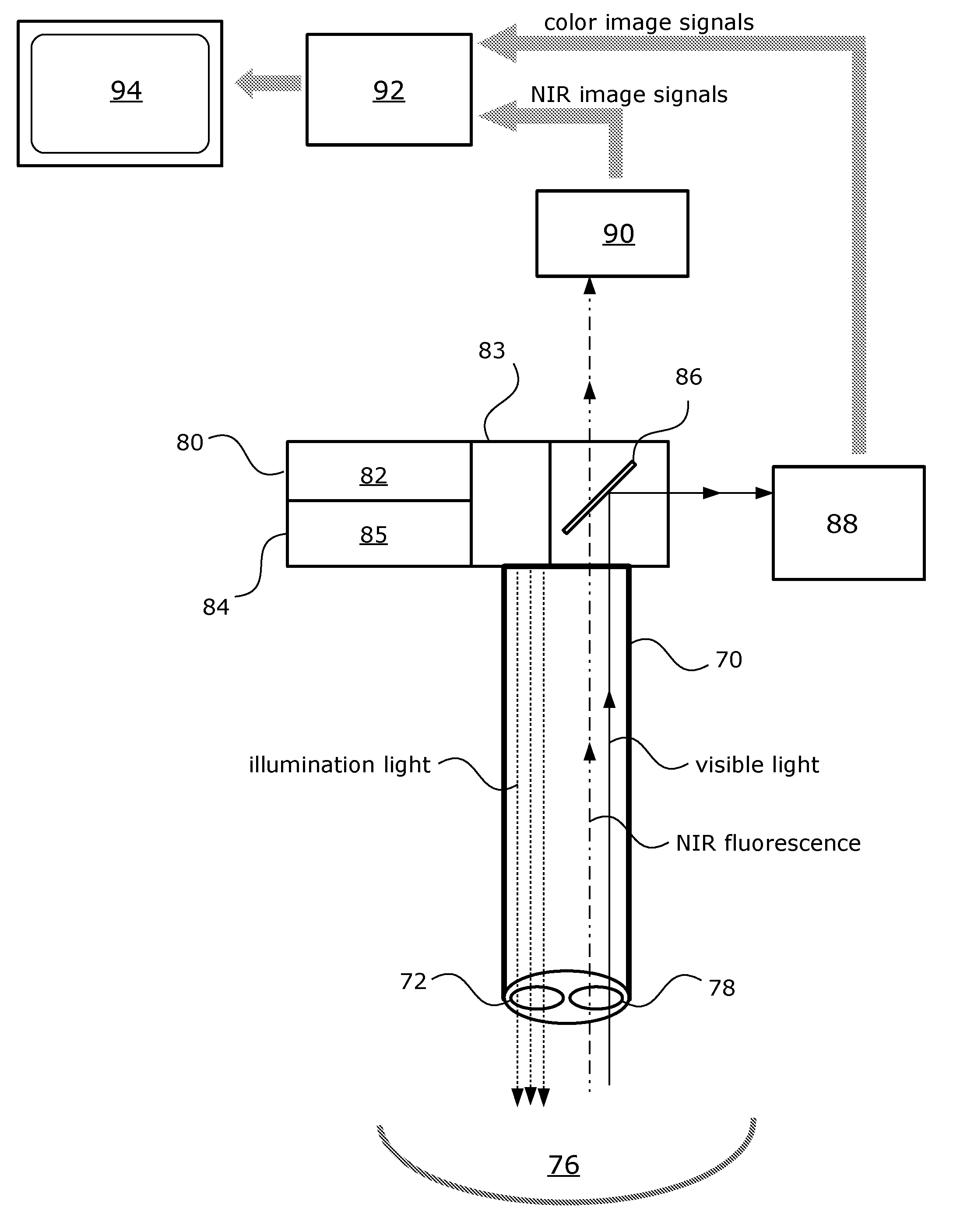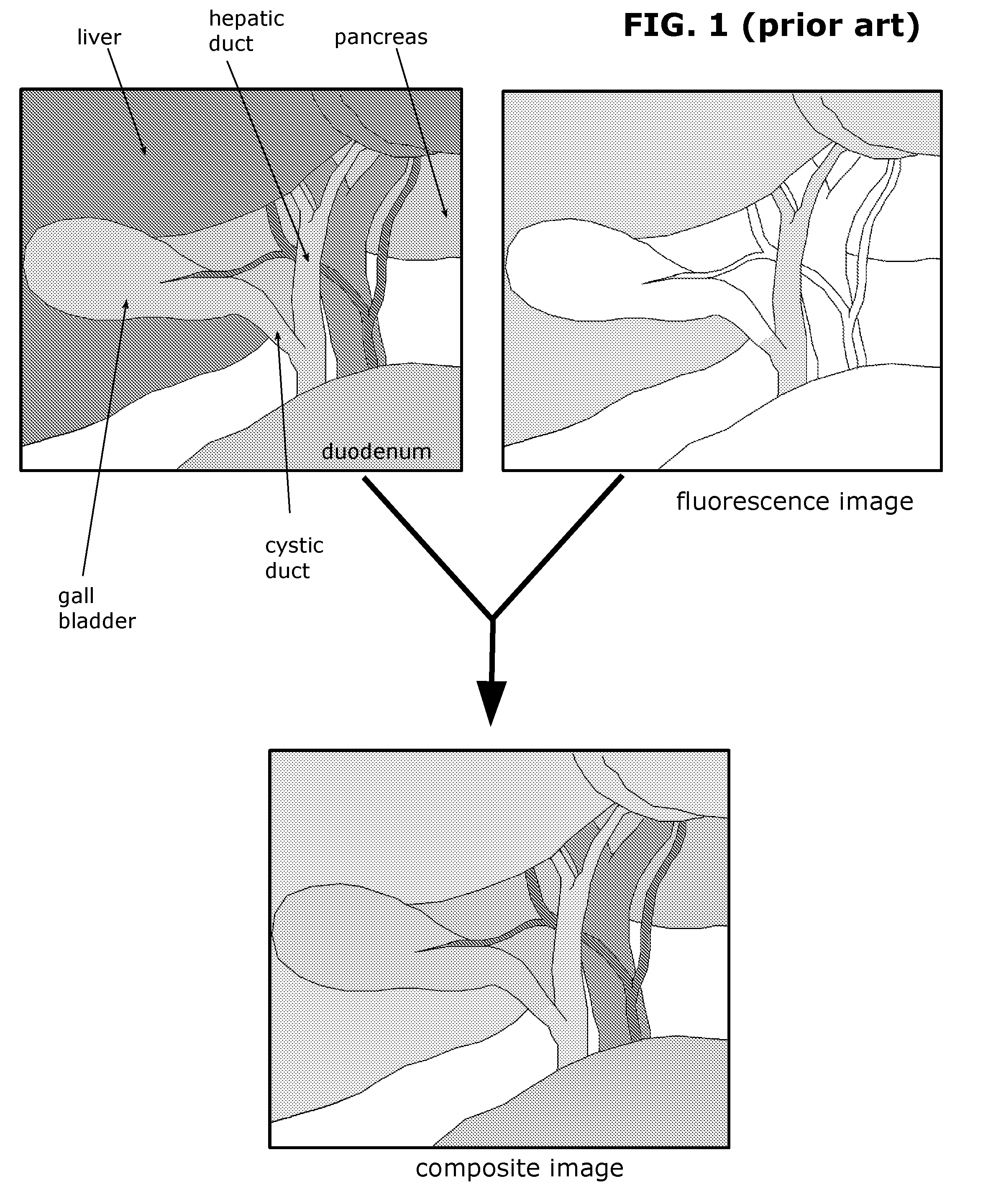Laparoscopic Cholecystectomy With Fluorescence Cholangiography
- Summary
- Abstract
- Description
- Claims
- Application Information
AI Technical Summary
Benefits of technology
Problems solved by technology
Method used
Image
Examples
Embodiment Construction
[0034]In my invention, a fluorescent video image of the surgical field is composited with a color video image of the surgical field in real-time to produce a composited video image. In the composited video image, the fluorescence video image (which is in greyscale) is shown in a pseudo-color. Other terms of the art that are equivalent or encompassed by the term “compositing” include blending, overlaying, superimposing, or merging the images. The expression stating that the fluorescence image is overlaid or superimposed over the color image does not necessarily indicate any particular order of layering. Whether the fluorescence image is treated as a layer over the color image or the reverse arrangement, the same desired effect can be rendered, i.e. that the fluorescence image appears to the human user as being placed over the color image.
[0035]The image processing required to composite the color video image with the NIR fluorescence video image may be performed by any suitable image ...
PUM
 Login to View More
Login to View More Abstract
Description
Claims
Application Information
 Login to View More
Login to View More - R&D
- Intellectual Property
- Life Sciences
- Materials
- Tech Scout
- Unparalleled Data Quality
- Higher Quality Content
- 60% Fewer Hallucinations
Browse by: Latest US Patents, China's latest patents, Technical Efficacy Thesaurus, Application Domain, Technology Topic, Popular Technical Reports.
© 2025 PatSnap. All rights reserved.Legal|Privacy policy|Modern Slavery Act Transparency Statement|Sitemap|About US| Contact US: help@patsnap.com



